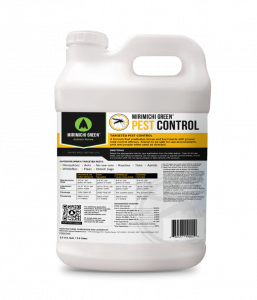Sodium Lauryl Sulfate

Sodium Lauryl Sulfate is a widely-used surfactant that can act as a biopesticide, disrupting the cell membranes of pests while also functioning as a soil wetting agent.
What is Sodium Lauryl Sulfate?
Sodium lauryl sulfate (SLS) is a widely-used surfactant, primarily known for its foaming and cleansing properties. SLS is a versatile and effective compound, often utilized in various household and industrial applications, such as soaps, shampoos, detergents, and toothpastes. However, one of its lesser-known yet equally important applications is in the field of pest control.
Where Does Sodium Lauryl Sulfate Come From?
SLS is derived from lauric acid, which is a fatty acid commonly found in plant oils such as coconut and palm kernel oils. Through a process known as sulfonation, lauric acid is converted into sodium lauryl sulfate. The resulting compound is biodegradable and, when used in appropriate concentrations, safe for humans, animals, and the environment.
Benefits of Sodium Lauryl Sulfate in Pest Control Products
- Non-toxic and eco-friendly: Sodium lauryl sulfate is a non-toxic and environmentally friendly alternative to many chemical pesticides. Its biodegradable nature ensures that it breaks down rapidly, minimizing any long-term environmental impact.
- Wide range of efficacy: SLS is effective against a broad spectrum of pests, including insects, mites, and fungi. This makes it a valuable ingredient in pest control products targeting common garden pests, such as aphids, spider mites, and whiteflies, as well as household pests like ants, cockroaches, and bed bugs. Additionally, SLS can help control mold and mildew growth in damp areas, further enhancing its versatility in pest management.
- Low risk to non-target organisms: One of the significant advantages of using sodium lauryl sulfate in pest control products is its low risk to non-target organisms, such as pollinators, beneficial insects, and other wildlife. When used correctly and in appropriate concentrations, SLS poses minimal harm to these organisms, making it a safer alternative to synthetic chemical pesticides.
- Enhanced penetration and adhesion: Due to its surfactant properties, SLS can improve the penetration and adhesion of pest control products on various surfaces. This feature is particularly beneficial in targeting hard-to-reach pests and ensuring a thorough application, increasing the effectiveness of the pest control treatment.
- Compatible with other pest control agents: Sodium lauryl sulfate can be combined with other natural pest control agents, such as essential oils or diatomaceous earth, to create a powerful and comprehensive pest management solution. This compatibility allows for the formulation of pest control products that can target multiple pests simultaneously while maintaining their eco-friendly and non-toxic characteristics.


